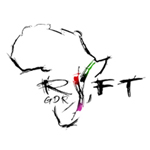27th meeting of SAfA at the University of Algarve in Faro
hosted by the Interdisciplinary Centre for Archaeology and Evolution of Human Behaviour (ICArEHB)
July 21-26 2025

52 sessions are opened for the SAfA (Society of Africanist Archaeologists) 2025 meeting in Faro, Portugal (22-25th July 2025) including sessions in archeological survey in Ethiopia, Central Africa, Southern Africa, Albertine Rift, Morocco, Nile Valley; ethnoarchaeology, heritage management, geoarchaeology, chronology, climate change, obsidian studies, Early Pottery, bioarchaeology, zooarchaeology, aquatic ressource, ochre exploitation, Early Technology, Middle Stone Age, Later Stone Age, African women in archaeology and paleontology…
You will find the preliminary list of sessions in the attached file and the procedure for submitting abstracts in the link below: https://safa2025.icarehb.com/poster-and-oral-presentation-submissions/
Instructions for paper submission:
- Participants can submit their abstracts during the call for individual submissions, which will be open from December 5, 2024 – January 31, 2025.
- Session participants must select the session title (“African perspectives on obsidian studies in Archaeology “) when they submit their abstract otherwise it will not be associated with this session.
- All relevant information for individual submissions will be posted on https://safa2025.icarehb.com
- A preliminary program will be posted on the SAfA website in January 2025.
Please let us know if you have any questions.
Session details
Organisateurs :
- Benjamin D. Smith (Cultures et Environnements, Préhistoire, Antiquité, Moyen Age (CEPAM) CNRS – UMR 7264 -Université Côte d’Azur), bdsmith1991[at]gmail.co
- Lamya Khalidi (Cultures et Environnements, Préhistoire, Antiquité, Moyen Age (CEPAM) CNRS – UMR 7264 -Université Côte d’Azur)
- Yonatan Sahle (Department of Archaeology, University of Cape Town, Rondebosch 7701, South Africa)
Abstract: Obsidian has played a central role in archaeological studies of past technology in Africa for decades. Much of this research has centered on compositional studies aimed at sourcing stone tools to their geographic origins. The past two decades in particular have seen an increase in these studies due the introduction of portable X-Ray fluorescence spectroscopy to the discipline. Nonetheless, Africa’s potential for advancing the field of obsidian research continues to be underestimated despite its unique geology, exceptional paleontological and archaeological record, and numerous obsidian hotspots. It constitutes a unique and enduring component of lithic toolkits dating to all periods across the continent. Ethiopia alone contains both the oldest examples of obsidian tool manufacture, and modern hide-workers whose economic and ontological worlds center around this material. This session welcomes all recent studies of archaeological obsidian in Arica. These may include studies of volcanic glass geochemistry, geology, techno-typological and/or functional aspects of artifacts, as well as recent research into obsidian sources, quarries, lithic economies, ethnoarchaeology, human dispersal/ mobility, history, and materiality. To celebrate the potential of the continent’s obsidian resources and their use from deep prehistory until today, the session organizers will guest edit a special issue in a journal to feature the results of recent/ongoing obsidian research across the continent.

- Sonia Harmand (CNRS, UMR 5608 TRACES, Turkana Basin Institute, IFRA Nairobi) sonia.harmand[at]cnrs.fr
- Nicholas Taylor (Turkana Basin Institute) nicholas.taylor.archaeology[at]gmail.com
- Bert Van Bocxlaer (CNRS, UMR 8198 Evo-Eco-Paleo, Univ. Lille) bert.van-bocxlaer[at]univ-lille.fr
- Xavier Boës (INRAP, UMR 7194 Histoire Naturelle de l’Homme Préhistorique) xavier.boes[at]inrap.fr
Abstract: With only a few notable exceptions, evolutionary research and models have focused on terrestrial resources and foods as the key drivers of, technological, cognitive, and dietary change throughout the Stone Age. Africa features extensive aquatic systems, including saline coasts and lakes, freshwater lakes, wetlands, and rivers, which provided durable aquatic resources that hominins could have relied on, regardless of seasonal shifts that might have affected terrestrial food supplies during the Plio-Pleistocene. The continent’s aquatic environments harbour rich aquatic and amphibious biota, including relatively mobile (e.g., fishes, aquatic mammals) and more sedentary (e.g., molluscs) taxa that offer potentially plentiful sources of protein and fats. Furthermore, these ecosystems also supply floral and mineral resources with unique properties suitable for modification and use for exploitation by technologically-driven hominin foragers. This session aims to open a broad discussion about aquatic resource use across the Plio-Pleistocene in Africa and draws together current research including comparative work from Europe and Asia. We particularly encourage contributions focusing on the selection, modification and use, and/or consumption of coastal and lacustrine biota, particularly molluscs, but also welcome the potentially important role of aquatic resources in human evolution, including (but not restricted to) examples of symbolic or decorative items.


